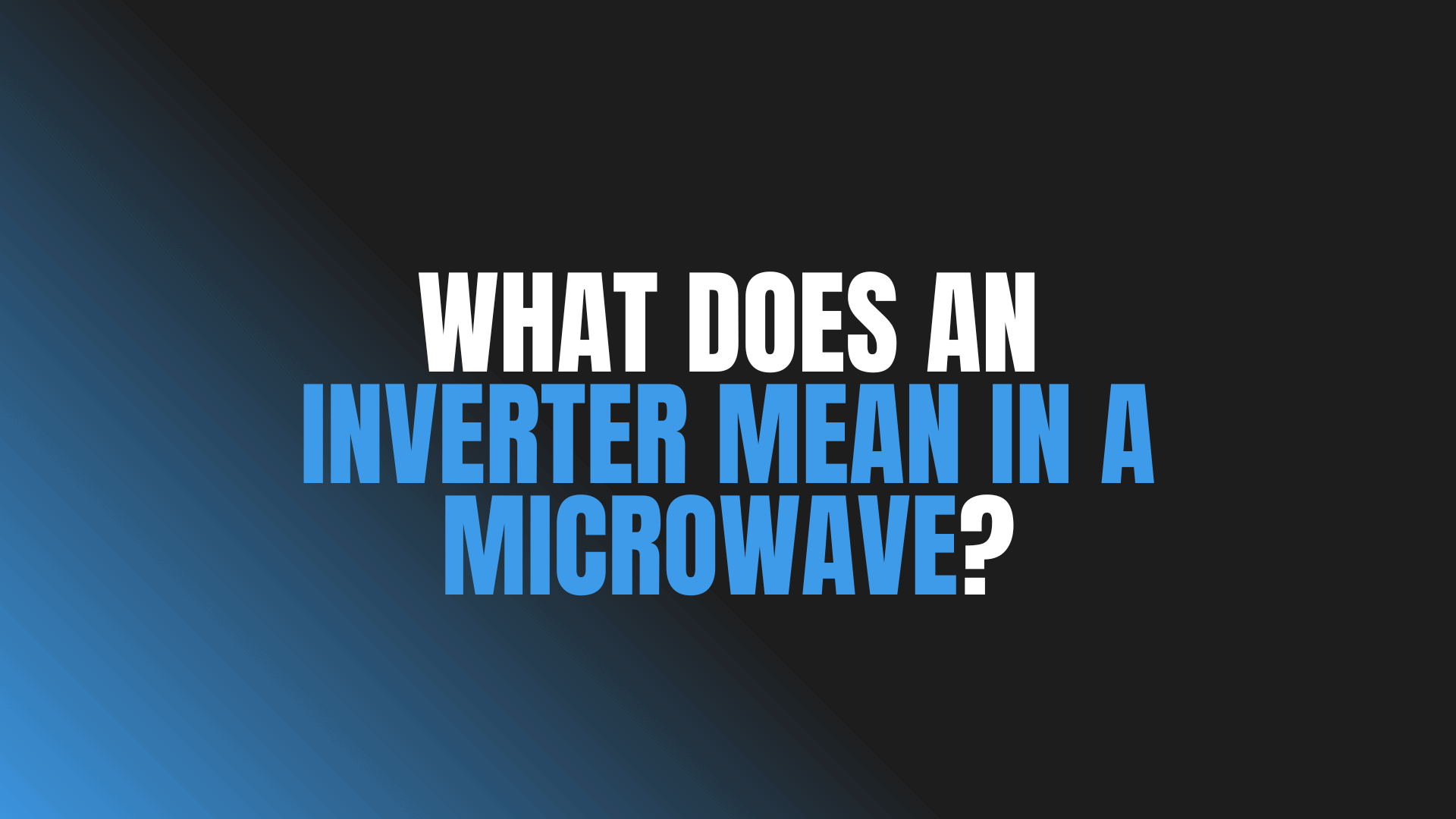
Question: What Does an Inverter Mean in a Microwave?
Answer: An inverter in a microwave means the microwave uses inverter technology to produce a continuous stream of power at varying levels, rather than cycling on and off at high power. This allows for more even cooking and better results with delicate foods.
Understanding Inverter Technology in Microwaves
Microwaves have become essential kitchen appliances. Most people use them daily to heat food quickly. But have you ever wondered how a microwave actually works? More specifically, what does an inverter microwave do? This article explains the core function of an inverter in a microwave and why it matters.
Traditional microwaves cycle on and off at high power to achieve different cooking levels. An inverter microwave, however, uses a continuous flow of energy at varying power levels. This key difference impacts cooking speed, evenness, and food quality. This detailed explanation will cover the benefits and potential drawbacks of this technology.
How Traditional Microwaves Work
Traditional microwaves use a transformer to generate high-power microwaves. This energy heats your food. However, these microwaves operate at a single, high power setting. To simulate lower power levels, the microwave turns on and off repeatedly. Imagine a light switch flicking on and off quickly. This on-off cycle creates the illusion of lower power.
This cycling can lead to uneven heating. Some parts of your food may overheat while others remain cold. Foods can become dry or rubbery due to this inconsistent energy delivery. The on-off bursts of energy can also damage delicate foods.
Click here for more information on refacing kitchen cabinet doors Toronto
Related Article: Do Inverter Microwaves Interfere With Wi-Fi?
Related Article: Can You Put Metal in an Inverter Microwave?
Benefits of Using an Inverter Microwave
This technology offers several advantages over traditional microwaves. Even heating is a key benefit, resulting in better food quality. They also generally cook food faster.
Inverter microwaves excel at defrosting. The consistent power avoids the partially-cooked, partially-frozen result common with traditional microwaves. These models also tend to use less energy due to their more efficient power management.
Even Heating:
Eliminates hot spots and cold spots.Faster Cooking:
Continuous power delivery speeds up the cooking process.Better Defrosting:
More even defrosting, preventing partially cooked edges.Energy Efficiency:
Precise power control reduces energy waste.
Potential Drawbacks of Inverter Microwaves
While inverter microwaves offer many benefits, some potential drawbacks exist. These microwaves typically have a higher initial cost compared to traditional models. Repairing an inverter microwave can also be more expensive due to the more complex electronics involved.
Although generally reliable, the main component adds another potential point of failure. Despite these potential downsides, the improved cooking performance and efficiency often outweigh the increased cost for many users.
Choosing the Right Microwave for Your Needs
Selecting between a traditional and an inverter microwave depends on your individual needs. Consider your budget and cooking habits. If you prioritize even heating, consistent defrosting, and faster cooking, an inverter microwave may be a worthwhile investment.
However, if you are on a tight budget and primarily use your microwave for simple reheating tasks, a traditional microwave may suffice. Carefully weigh the pros and cons of each technology to determine which best suits your lifestyle.
Conclusion: The Future of Microwave Cooking
Inverter technology represents a significant advancement in microwave cooking. It solves many of the issues associated with traditional microwaves, such as uneven heating and slow defrosting. By providing precise and continuous power control, inverter microwaves deliver superior cooking results and enhanced efficiency.
While the higher initial cost may be a barrier for some, the long-term benefits, such as improved food quality, faster cooking times, and potential energy savings, make these microwaves a compelling choice for many consumers. As technology continues to advance, inverter microwaves are poised to become the new standard in kitchen appliances, offering a more efficient and enjoyable cooking experience.

Blue Malue Get in touch with Blue here.
